Imperial Cities of Morocco
- Tony
- Apr 3
- 27 min read
Morocco is much more than the typical internet scenes of a hot, wind-blown, dusty desert, with aggressive vendors luring tourists into their shops as they come off the boats in Tangiers or the gritty, narrow labyrinth of the Medina and Souks in Marrakesh. Mix in ancient monuments and cultural and religious influences, and visiting here can seem a little out of your comfort zone.
Admittingly, we shared some of the same misconceptions before our first visit, but as curious explorers, we ventured into the unknown to experience the wonders of Morocco. After all, new experiences and broadening our minds to the world are the reasons that we travel.
Prior to visiting, my thoughts on Morocco had been of a distant exotic destination filled with mystery, intrigue, and wonder. I had visions of sultans, magic carpets, snake charmers, vast sand desserts, and palm tree oasis. Yes, some of this does exist in today's Morocco, but the country offers so much more in its diverse landscapes and experiences. It's truly mesmerizing and worth visiting repeatedly to explore the rich diversity.
We found the people we interacted with much more friendly and compassionate than what we read about prior to coming. Yes, you must use your common sense as you would traveling anywhere, but don't let fear keep you from enjoying yourself. Be mindful of unwritten rules, like in some areas and people who don't like to be photographed, or if they allow it, you may be expected to pay them a tip, especially performers. Just ask before, and you'll usually be greeted with a smile and a yes. There is a great sense of community among the residents here; it's not uncommon to see shopkeepers inviting others to share lunch with them at a small table in their shop or co-op with other shopkeepers to find the exact item you are looking for.
Prepare to wake up all your senses in Morocco, from historic cities, ancient monuments, the medinas, and souks to modern upscale cities. Morocco has many options, from miles of Atlantic and Mediterranean coast and white-sand beaches to vast, lush farmland and vineyards, sharp mountain peaks, deep valleys, and high plateaus of the Atlas mountains. For a unique trip, experience the vast sand-filled landscape of the Sahara desert.
A short one-and-a-half-hour flight from Sevilla takes us to the first of several stops of Morocco's Imperial cities (former and current capitals), Marrakech, where we will spend our first three days. We then travel by train from Marrakech through Rabat and on to Fes for three nights. Then it's a road trip driving from Fes to Casablanca, traveling through the spectacular landscape of the lush Moroccan green belt, stopping at the Roman ruins of Volubilis, the Unesco city of Meknes, and finally, lunch in the wine country. On our last night in Morocco, we will stay in Casablanca and fly back to Sevilla the following morning.
Marrakesh (Marrakech)
We planned our visit to be in Marrakesh during the last few days of Ramadan, at the end of a month's long fasting ritual where everyday from sunrise to sunset Muslims refrain from food, drink, and smoking and focus on prayer, reflection, and community. It can be a little quieter in the Medina during the day as some of the shops close for a few hours, but come evening, vibrant "Iftar" gatherings and increased social activity and fill the streets as people break their fast.
Eid al-Fitr is the day that marked the end of Ramadan, a time of celebration involving special prayers, feasting, visiting family and friends, giving gifts, and wearing new clothes, often lasting for three days. We witnessed the celebratory atmosphere in the streets and seeing families gathering together and children receiving small gifts. The overall mood was much happier today and many were dressed in their finest robes, some of silk, some ornately embroidered, and some wearing the uncomfortable looking pointed leather shoes.
It was a special treat to witness the dedication to the Muslim religion. Five times daily, multiple melodic but bold voices announced calls for prayer from the loudspeakers atop each Mosque's minaret. The voices called out in Arabic, "Allahu Akbar" (God is great) four times, along with declarations of faith and calls to prayer and success. It was an experience to remember.
There are two distinct cities in Marrakesh, the walled ancient Medina and the more bougie, modern 20th-century city outside the walls. For this trip, we stayed at Riad La Clé d'Or located inside the walls of the Medina in the south end known as the Kasbah district. This Riad, as with many others in the Medina, was located through a maze of narrow residential streets just off the district's main streets, providing a quiet respite from the raucous Medina.
A Riad is a former family home behind high walls that create the narrow winding streets of a neighborhood. The walls are very plain, usually without exterior windows, with a single heavy wooden door that allows access inside. Once through the door, you are welcomed into an oasis where the open courtyard is filled with light from the open ceiling above and surrounded by balconies and rooms on all levels. The interior is generally ornately decorated with lush plants, trees, fountains, pools, artisanal tile work, and carvings in plaster and wood. Many Riads now open for guests combine several houses (Riads) linked together to provide more space for guest rooms, restaurants, and rooftop terraces.
Our Riad was a few steps from the Bab Agnaou gate, one of the main entrances into the Medina, and near the enormous El Mansour Mosque. Built in 1190, the Mosque was heavily damaged by the 2022 earthquake that shook most of Morocco and heavily damaged both ancient and new buildings. You could see significant exterior damage and walls supported by structures to keep them from falling. Although restoration is taking place, it will take several years to reopen.
The Medina, the Souks, and the Jamaa el Fna areas are not for the faint of heart. It can feel overwhelming at first, crowds of locals and tourists making their way through the narrow labyrinth, dodging motor scooters, bicycles, donkeys, and carts as vendors invite you to haggle over spices, leather goods, or glowing lanterns. But the chaos soon becomes exhilarating, a dance of sorts as you begin to adjust and move to the rhythm of the chaos, especially once you realize you can step off the main thoroughfare and find peaceful riads where you can sip mint tea in a tranquil courtyard.
The Medina is a maze of alleys and streets filled with distractions of trinkets, artisans, colors, smells, exotic foods, and ancient monuments. You can easily get lost in your thoughts as you wonder what it was like here when nomads risked their lives crossing a hostile desert to reach the Medina and offer their goods brought from miles away. You can easily become physically lost in the twists and turns, dead ends, and incorrect directional signage, so be prepared to do both and allow time for discovery.

Souks
Today, we wandered through the Souks of the Marrakesh Medina, an Arabian bazaar of sorts with its labyrinthine streets and narrow alleys that are divided into different quarters, each distinguished by the craft practiced there. In the Textile Souk, walk under billowing sheets of freshly dyed cotton and admire the colorful garments. The Carpenter's Souk, where the smell of freshly cut wood leads to intricately crafted furniture. The Metal Souk is filled with the noise of hammers and grinders as lamps, tables, and benches are beautifully hand-crafted.
As you travel through the Medina and Souks, you can't help but notice the number of cats here in Marrakech and throughout Morocco. Adults and kittens have become part of the fabric as they weave their way effortlessly through the crowds, ultimately taking their place at their favorite vendor's shop, waiting for food and water, which is happily provided by the locals. They sleep in doorways, on curbs, and makeshift cardboard houses, or wherever space can be found. In Islamic tradition, Cats hold cultural significance, revered for their cleanliness. The Prophet Muhammad is said to have had a deep affection for them, which has influenced how they are treated in Muslim-majority countries. For practical reasons, cats are kept for their ability to control rodent populations.
Tonight's dinner is on the terrace overlooking Jamaa el Fna at Le Tanjia. Traditional Moroccan foods featuring an assortment of Moroccan salads that are always a nice surprise. The salads are served in several small bowls and consist of marinated vegetables, tomatoes, beets, cous cous, cucumber and onion, eggplant, roasted peppers, lentils, and olives, you never know what combination or surprises you will get. The traditional Tajin was our main course: one chicken and one beef accompanied by Cous cous topped with carrots and caramelized onions. We have found that the Moroccan wine isn't too bad either.
A few historic sites were on our agenda for today, including the Saadian Tombs, Koutoubia Mosque, the Jewish Quarter, the Badi Palace, and the Bahia Palace.
Saadian Tombs
The Saadian Tombs were built in the 16th century by Sultan Ahmad al-Mansur, the third ruler of the Saadian dynasty who controlled a vast fortune and territory, including the gold fields of western Africa and many key trade routes. They were built in 1557 on the El Mansour Kasbah Mosque grounds to honor his ancestors as a grand display of his power and wealth. The tombs are decorated with marble, carved alabaster, delicate Zellij mosaics, and intricate stucco carvings. When Saadian sultans died, they were buried here in splendor. When the Alaouite dynasty succeeded the Saadians, they feared the love the population had for the Saadians, so they built a huge wall around the tombs to ensure they did not become a focus for dissent. The tombs were forgotten as they remained hidden behind these walls until rediscovered during the 1917 French occupation by an aerial survey.
Koutoubia Mosque
The Koutoubia Mosque dominates the Marrakesh skyline, with three distinctive golden balls atop the minaret. The story goes that the wife of Youcoub El Mansour ate three grapes one day during the fast of Ramadan. In penance, she melted down all her jewelry and molded them into these three balls. The minaret displays the classic proportions of all Maghrebi minarets, and each side was individually decorated, which can still be seen in the decorative bands of faience that only survive on the top story.
The long entry to the Mosque is lined with horses and carriages waiting to take tourists on a tour through Marrakesh. As you approach the Mosque, the street is lined with trees and ornate fountains.
Jewish Quarter (Mellah)
The Jewish Quarter of the Marrakesh Medina was constructed by families who had emigrated from Spain during the Inquisition in the 15th and 16th centuries. Here, you'll see that the architecture is markedly different from the rest of Marrakesh, with Andalucian influences in the style of the buildings. You can also visit one of the oldest synagogues in Morocco, built in 1492. About 40,000 Jews lived here at its peak in 1940, but following the independence of Israel in 1948, many left Marrakesh, leaving today's population around 200 (not counting all the tourists!).

El Badi Palace
built in 1578 by the Sultan Ahmad al-Mansur, ruler of the Saadian Dynasty. The palace was built as a symbol of power and wealth to commemorate the defeat of the Portuguese. Over 300 rooms were decorated in traditional Moroccan and European styles, with intricate mosaics, marble columns, gold, turquoise, crystal, and ornate carvings. The palace was also home to the Sultan’s harem, which included over 500 women. Currently in ruins, as it was stripped entirely at the end of the 17th century when the capital of Morocco was moved from Marrakesh to Meknes. All the marble, artisan work, mosaics, and valuable art were placed in palaces and other important monuments in Meknes.
Bahia Palace
The more historically recent Bahia Palace, which translates to 'the Beautiful, the Brilliant,' was named after the mistress of Ahmed ben Moussa. The palace was initially built in the late 1860s and is an impressive blend of Islamic and Moroccan architectural styles, featuring intricate marquetry, stunning Zellij tile work, and ornate ceilings. Its design includes several riads, an elaborate network of rooms and garden courtyards, a mosque, a Quranic school, a hammam, and a lavish section for the harem. The grand courtyard was used to entertain distinguished guests.
Moroccan Culinary Arts Museum
We tucked in here as we were passing by for a bit of air conditioning but were instantly amazed by the décor and charm of this large space. We sat in the ground-floor tea room of the renovated Riad, had a snack of assorted Moroccan pastries, sampled refreshing drinks from the "Mocktail" menu, and admired the ornate décor. We later wandered through the interior courtyard.
Moroccan food is much more than couscous and tagine served in a cylindrical pot. It's a fusion that mirrors the cultural landscape of Arab, Amazigh (Berber), Mediterranean, and French, among others. The museum is adjacent to the Bahia Palace entrance in the heart of the Medina. The space is dedicated to preserving the country's culinary heritage in a showcase of Moorish architecture. Visitors can escape the heat and noise of the Medina's narrow alleys and find themselves in an 18th-century palace decked out with mosaic tiles, sculpted plaster, and hand-painted cedar ceilings. You can learn about traditional tableware and décor, cooking techniques such as hand-rolling couscous, and how to prepare dishes ranging from tafarnout (flat bread) to delicious kaab lghzal (gazelle horns), a dessert filled with ground almonds and served during the tea ceremony. A rooftop restaurant offers lunch, coffee, tea, and pastries with a panoramic view of the old city and the 12th-century Koutoubia mosque.
Jamaa el Fna and the Street food of the Medina
As I said before, the Jamaa el Fna, the Medin, and the Souks are not for the faint of heart, but they can be highly entertaining at night when seeking out the traditional street foods of Marrakesh. We started our evening tour of the street stalls and markets to explore what was fresh and traditional.
Around 5 p.m., the food vendors arrive each day with their food stalls on wheels. In minutes, the square is filled with stalls of latticework, awnings, lights, brightly colored menus, metal counters, and benches, transforming the area into a well-lit foodie labyrinth, which opens for business just before sunset.
The meaty center of the market reveals myriad Moroccan specialties: bubbling Tangia pots, pots of Harira, stacks of flaky Bastilla, all sorts of entrails, sausages, and brochettes. Menu-toting hawkers approach from every angle, passionately sharing the virtues of their stand.
Here is some of the Food we discovered.
Moroccan Pastilla (Bastilla), We found a small shop that caught our attention just at the entrance to the streets of our Riad. A young woman had her tempting Moroccan pastries on display so of course, we couldn't resist the array of treats and chose to take a few samples with us, but the Pastilla was the star, a sweet and savory pie wrapped in flakey filo pastry and filled with a slightly sweet but savory blend of ground chicken with onion, saffron, turmeric, ginger, cinnamon and sugar. These delights likely originated in Andalusia (Southern Spain) and were brought to Morocco by Muslims and Sephardic Jews fleeing Spain in the 15th century. In Morocco, Pastilla is generally served as a starter at the beginning of special meals and in one of two forms: one with poultry (often chicken or pigeon) and one with seafood.
Msemen (Rghaif) is a squared flatbread usually eaten in Morocco for breakfast and teatime. Our first experience was at breakfast in the Riad, served plain with jams and honey as condiments. Their texture is very soft, rich, and fluffy. They can be served plain or stuffed, sweet or savory. In a street stall, we sampled both plain and one filled with caramelized onions, which were very good.
Moroccan Almonds and Medjool dates. Our guide took us to the basement of a local shop, where amazing, colorful displays of almonds were displayed. The almonds were individually rolled in honey and coated with a variety of spices and seeds: cinnamon, anise, sesame, poppy, chia, etc. They were all fresh and delicious. The fresh dates are also a nice treat and taste like candy.
Fruit stalls making fresh juices and combinations. When walking through the streets of the Medina, it's hard to ignore the abundance of fruits that come together to create a colorful tapestry that is just begging to be eaten. Morocco produces an abundance of fresh fruits and produce, but we learned that they don't eat much of the fruit but choose to drink it as juice.
Harira is a traditional Moroccan soup made from lentils, chickpeas, and tomatoes. It is commonly enjoyed as a snack or light dinner, especially towards the end of Ramadan. The soup takes on many different forms, as recipes vary to include beef, lamb, chicken, vegetables, rice, and even pieces of Vermicelli. The soup can also be thickened with flour and slowly added egg to give it a different texture.

Moroccan tea is a staple in Morocco; locals refer to it as Berber whiskey. Powdered green tea made with fresh mint and sweetened with sugar, more than a few cups were consumed during our visit. It’s commonly served as a welcome drink and with meals, but it is made from scratch, so don’t expect it to appear instantly. Your patience will be rewarded with an elaborate presentation involving glasses with a gold inlay and a ceremonial method of pouring designed to aerate and cool the tea.

Ghoulal or Babbouche (snails) are eaten differently from how the French eat snails. Moroccan snail soup is cooked in a broth with 15 different herbs and spices. Locals believe the broth is good for digestion and fever. We opted out of trying this one.
Tanjia and Steamed sheep head After dodging a few particularly persistent guys, we settled in at Cart No. 85, drawn to it by the attractive display of Tanjia vessels, boiled sheep heads, and bowls of olives. We sampled lamb and beef Tanjia and some of the sheep's cheeks from the steamed head, which were delicious.
Tanjia is a Moroccan amphora that dates back to Roman times, used to transport olive oil. It has long been used as a cooking vessel to make a confit-style stew. It's not a festive dish but a dish shared with friends, colleagues, and groups of people who gather to break bread. It's subtly spiced, slow-cooked and can also have a sweet or tangy note. The sheep's head is steamed with cumin, salt, and chili.
A few more images from our evening food tour in the Medina of Marrakesh
Today we depart Marrakesh by train on our way through the capital city of Rabat to the UNESCO World Heritage city of Fes. A six-hour train ride through the countryside, riding in 1st class, which is not quite the same standard as in Europe but comfortable in a shared cabin for six people. You certainly can't beat the price at 35 euros.
Arriving in Fes, it was a short trip from the station to the Riad Maison Bleu, our base for the next three nights. The Riad is located in Ain Azliten, one of the oldest districts in the Medina of Fes. Similar to our Riad in Marrakech, it is located in a maze of quiet, unassuming residential streets, but once inside, the gorgeous open interior and views of the surrounding ruins and monuments certainly didn't disappoint.
Fes is the crown jewel of the Imperial cities. The city holds significant importance to Muslims and is Morocco's spiritual and cultural capital and the center for religious activities and pilgrimage, often called the "Mecca of the West."
The Medina is home to the oldest continuously operating university in the world, the University of Al-Quaraouiyine, founded in 859. It also includes other religious schools, such as the 14th-century Bou Inania and Al Attarine, each decorated with elaborate cedar carvings and ornate tile work.
Unlike the bustling Marrakech Medina, the vibrant Medina in Fes seems to have more of an old-world atmosphere, an authentic feel, intermingled with historical monuments and medieval Marinid architecture. Much of the traditional culture remains that has defined it over the past thirteen hundred years. With over nine thousand streets and alleyways within the maze of its Fes El Bali hillside medina, you will certainly feel the burn in your legs and your senses engage. You will see architectural jewels in the Medina such as the Bou Inania Madrasa, the Al Karaouine Mosque, and the Mulay Idris II Mausoleum. Venture outside the walls of the Medina and marvel at the ornate bronze entry doors of the Royal Palace (One of over 200 owned by the Royal Dynasty), tour the Jewish quarter, or check out the contemporary urban landscapes and wide tree-lined avenues of the more modern French section of the city.
Dinner at the rooftop restaurant or our Riad on the first night. Traditional Moroccan salads, Tagin of Chicken, olives, preserved lemon, and Moroccan spices, crisp flakey pastry filled with orange blossom cream and chopped almonds, and sweet orange slices sprinkled with cinnamon. All very delicious. We tried another Moroccan wine with dinner that has proven to be of very good quality, although a bit more expensive than Portuguese wines at home.
The main gates of the Royal Palace and the Mellah (Jewish Quarter) in Fes
Panoramic view of the massive Medina of Fes

Life on the streets of the Medina. The butcher here specialized in Camel meat (Note the camel head hanging on the outside of his stall). We didn't try any, but it's common to find it on the menu in Morocco. The brown paste in the last photo is soap used for cleansing rituals. It's not pretty, but it smells nice.
The Tannery. leather goods are abundant in Morocco, and you will find Tanneries in most cities that supply dyed leather to the artisans. Sheepskin products are the softest and most expensive, but other animal skins are available, too. The tanning process is not pretty, but we were told all of the colors are from natural sources.
Historic Fes Around almost every corner in Fes, we found a real glimpse of daily life, authentic shops, and incredibly well-preserved monuments. Below, you'll find a common dried fruit stall, an ornate rug shop, the exterior of Sidi Ahmed Mosque and its Minaret, one of the courtyards of Al Qarawiyyn Mosque & University, the entry hall to the Mulay Idris II Mausoleum, and the last two photos are of Al Attarine Madrasa.
For lunch we popped in to a non descript building from the outside and entered into another ornately decorated space where we shared Chicken kebab with rice.
The woodcraft museum showcased some of the fine woodwork and carvings that are visible in many of the interior spaces of Morocco. Even the buildings interior shows intricate carved wood features.
Our dinner tonight at Bistro Laarousa on the rooftop of the Laarousa Riad. The lush lobby on the ground floor is a nice welcome, leading you to a set of long, steep stairs climbing up four long floors to the roof top terrace. Nice views of the Medina but a thunderstorm moved us inside and provided a raucous light show during dinner. Caesar salad, lamb chops and a chicken sandwich were our selections
A few shots of morning life in the Fes Medina
Jardin Jnan Sbil This morning, we walked along the outside of the Medina ramparts to Jardin Jnan Sbil. It is a nice public garden with lush greenery, lakes, and fountains. A few cages housed chickens and pigeons. The garden was formerly part of the Royal Palace but turned into a public space for others to enjoy. One of the Palace gates can be seen just across the street from the garden.
Walking through the wide tree lined avenues of the more modern French section in Fez you can also enjoy more contemporary urban landscapes, such as the wide avenues and modernity of the French area.
Lunch in the new city at MB Restaurant, upscale dining and food. Pigeon Pastilla as a starter, Caesar salad, and Jon Dory over black rice risotto
Dinner tonight at ISHQ restaurant just outside the medina and close to our Riad. Housed in a beautiful multi story and glass enclosed building with an open atrium. The atmosphere was great and the food outstanding. We sampled the mushroom soup amuse bouche, the variation around button mushrooms with soft boiled egg and sage oil, Shrimp Linguini with shellfish bisque, and seabass with black garlic, Szechuan pepper, and red curry
Road trip today as we leave Fes and head toward our next destination of Casablanca. We drove through miles of beautiful fertile farmland, vast countryside with mountains, valleys, and lakes as a backdrop.
The Roman Ruins of Volubilis The Romans really knew how to pick a great place to live. Sitting in the middle of a fertile plain, the Unesco World Heritage site of the ruined Roman city of Volubilis is the best-preserved archaeological site in Morocco. It's impressive, enclosed by a rampart built in 168 AD, with eight monumental gates and an array of public buildings, including a basilica, capitol, and triumphal arch.
One of the farthest extensions of the Roman Empire, it was a center of olive oil production and other crops that were shipped back to Rome. The site features impressive remnants of public buildings, private estates, and intricate mosaics, showcasing Roman architecture and the daily life of the ancient Romans. Only about half of the 40-hectare site at Volubilis has been excavated. Archeologists believe they have yet to excavate a coliseum and other public entertainment sites.
Mosaics of Volubilis Wealthier Romans living here built lavish courtyard houses with intricate mosaics floors that are still in tact today. The beautiful intricate mosaics are preserved in situ, out in the open unprotested from the elements. They are spectacular to see in their original surroundings.
Meknes is known for its imperial past, with remnants including Bab Mansour, a huge gate with arches and mosaic tiling. The gate leads into the former imperial city. The Mausoleum of Sultan Moulay Ismail, who made the city his capital in the 17th century, has courtyards and fountains. Our stop here was brief as there is not much to see inside the small walled city.
Chateau Roslane our stop for a late lunch in the Moroccan wine country near Meknes. There are several vineyards and wineries in this area where the major production of Moroccan wine occurs. The wines that we have tasted on this trip from the region are very good. Chateau Roslane is a top producer in Morocco and has a botique hotel on the grounds. Lunch was outside overlooking the pools and vineyards on a beautiful sunny day
Casablanca and the Le Doge Hotel & Spa For our last night in Morocco, we stayed at the Le Doge Hotel and Spa in the heart of the Art Deco district. The district's 1930s architecture fits well, and an Italian influence carries through the interior.
I know DOGE has a very different meaning in the US right now, but this one has nothing to do with Musk and his position. The original Doge was a title for an Italian position of power, the highest official from the Republic of Venice for over a thousand years.
After a long day on the road, we arrived too late to experience any of Casablanca, so I guess we will have to return. We did have a nice dinner of Gyoza, Shrimp Croquettes, and Moroccan Mezes at the rooftop cafe.
Hassan II Mosque An early start today for our return home. Our driver insisted we stop and see the Hassan II Mosque on our way to the airport. The second largest mosque in Africa and the 14th largest in the world. It features the 2nd tallest Minaret and can accommodate 25,000 for prayers on the inside and another 80,000 on the grounds outside. It sits right on the Atlantic and is a spectacular sight at sunrise. The exterior is a work of art with intricate carvings, marble, and mosaics; I can only imagine how grand the interior is. It's the only Mosque in Morocco where non-Muslims can enter the prayer room, but only through guided tours.
Our first flight on Royal air Moroc. Time to head home.

Morocco Itinerary March 2025
Mar 28 Fri
Dep SVA to Marrakech, Ryanair
Transfer to Riad
Riad La Clé d'Or, 4 nights, Prestige room - double - Breakfast included
Restaurant recommendations
La Grand Bazaz – best view on top level
Charif Marrakesh – B/L/D Best French Pastries, Salmon w/Mango,, Royal Couscous
Next to Charif 12 story building with great views from rooftop – Lao?
Mar 29 Sat
Important regarding Ramadan (29th & 30th)
They make efforts to keep all disruptions to a minimum. The biggest difference is how quiet Marrakesh is at sunset as people head home to break their fast. The city will return to life in an hour or so as people head out to socialize and head to the Koutoubia Mosque to pray.
I’d recommend watching the prayers for a bit as the mosque will be so busy that most people will pray outside, so this could be quite interesting to watch!
The souqs and stalls will still be open on the 29th and 30th, though they may open later and close earlier than usual so people can break their fast and begin their prayers. All souqs and shops will open again and remain open later than normal. The historical sites will have amended opening times and are likely to be closed on the actual day of Eid, hence the change to the tours.
Dress Codes
We do recommend that women keep their shoulders and knees covered where possible and you are not going anywhere where you will need to cover your hair but I tend to take a scarf in my bag with me and then, should I feel I want to, I have the option to cover up.
Morning Souqs shopping tour
Today, your guide will meet you at your riad for a tour of the souqs in Marrakesh.
Afternoon at leisure
Suggestions for free time
Note: Morocco expert Denise Woolley suggests that visiting the country during Ramadan offers visitors a unique chance to see an essential part of Muslim culture: “Everyone should witness the craziness of the medina in Marrakech at sundown. Grab a good seat and watch families jostle for their first meal of the day,” she says.
Iftar is the meal that breaks the fast after sunset, and it’s a very special time for locals. Participating in an iftar meal can be a unique cultural experience, where you can experience traditional Moroccan dishes and witness the local camaraderie among. Many restaurants and hotels in Marrakech offer special iftar menus, so you can opt to get involved with the cultural experience. Moroccan food is delicious, and what better way to experience it than as the locals do?
A walk from gate to gate along the ramparts will take you from Bab Doukkala gate to Bab Agnaou gate along the historical city ramparts, with the pedestrian walk planted with roses to create an attractive setting.
Gueliz - You may devote an afternoon of your stay in Marrakesh to discover Gueliz, the new part of town that the French began to build in the early 20th century. Walking from the Medina down Mohamed V Boulevard, you can discover a few modern art galleries. These spaces are devoted to shows by young Moroccan artists, such as calligraphers, painters, and sculptors. Modern restaurants and shopping.
Traditional hammam experience—You can partake in a traditional bathing and cleansing ritual at a local hammam. Ask your riad for more information, as each hammam has different times for men and women.
Culinary Museum – great building and courtyard near the Badi palace
Yves St Laren museum and Gardens
Artisanal center near Jnae l fna – artisan, sponsored by the city, reasonable prices, quality
Mar 30 Sun
Morning Marrakesh historical tour
Afternoon at leisure
5:30 PM: Marrakech Tasting Trail—Private excursion with a guide. My advice is to make sure you're hungry!
Mar 31 Mon
Morning at leisure
Transfer from Marrakesh hotel to Marrakesh train station
Train from Marrakech to Fes - The Rail journey to Fes is approximately 6 hours
Transfer from Fez train station to riad
Riad Maison Bleue, 4 nights, Deluxe room - double - Breakfast included
Apr 1 Tue
Fez city tour
A guided tour of Fez is an absolute must. More so than in any other city, there is a real danger of getting lost in the medina if you are not orientated and missing some of the city's key sights. Using Google for directions doesn’t work.
Afternoon at leisure
TOP RECOMMENDATIONS
The fascinating city of Fez is well known for its bustling, maze-like streets and its treasure-filled souqs. Opening times and entrance fees for these sites can vary, so if you plan to visit, we suggest checking these details in advance on the sites’ websites or asking your hotel concierge. In general, attractions in Fez open at 10 am, but many stores, particularly in the Jewish quarter, remain closed on Fridays
Jnan Sbil Gardens - Take a stroll to the beautiful Jnan Sbil Gardens and escape the fast pace of the bustling medina. Situated just outside the medina walls, between Bab Bou Jeolud Square and the old Jewish quarter, known as mellah, these gardens are an oasis of calm. A visit here will see you discovering historic water wheels, rivers, stunning fountains, luscious herb gardens, and impressive bamboo, cactus, and Andalusian-themed sections. Visit a cafe and pick up a Moroccan mint tea to enjoy in the calm of Jnan Sbil. Alternatively, buy some local Moroccan bread, such as milawi or harsha, and enjoy it on one of the many benches.
Al Quaraouiyine Mosque—Built in 859 AD, Al Quaraouiyine Mosque was one of the oldest universities in the world. Today, it is a fully operating mosque; therefore, only Muslims are allowed inside. The recently renovated library on-site contains 9th-century handmade tilework and invites the public to see it. Although visitors cannot go inside the Royal Palace, Del el Makhzen, the impressive architecture, tilework, and bold tones of the structure can be enjoyed from the exterior.
Ville Nouvelle—If you want to experience a totally different side of Fez, Ville Nouvelle (New City) is accessible via taxi. A walk along the palm-tree-lined Hassan Deux Boulevard makes for a nice evening stroll, with brightly decorated water fountains at either end. The boulevard is lined with shops, banks, and cafés, perfect for grabbing a coffee and watching the world go by.
Ifrane - located just under an hour and a half from Fez, is a beautiful town rich in Alpine architecture and home to the most renowned and exclusive university in Morocco, Al Akhawayn. In winter, Ifrane is picturesque as its houses and pine trees become covered with snow, and it is a popular winter sports destination for Moroccans and tourists alike. If you fancy a trip to Ifrane, please give your Travel Link rep a call, and they will be able to arrange this for you locally or ask your riad who should be able to arrange a car and driver
Apr 2 Wed
Day at leisure - Free time for your own relaxation
Apr 3 Thu
Fez to Casablanca - Private vehicle with driver with local guide at Meknes & Volubilis
The drive from Fez to Casablanca passes through mainly cultivated farmland and some woodland, with small market towns along the way, such as Khemisset. As you approach Rabat, you stop first at Volubilis and Meknes.
Château Roslane vineyard tour - Shared excursion with your driver, including lunch and tastings
Le Doge Hotel & Spa – Casablanca, 1 night, 1x Junior suite - double - Breakfast included
Free Time in Casablanca
Casablanca is a vibrant and bustling city with a rich cultural heritage and many interesting things to see and do. Morocco's largest city and economic capital, with a rich cultural heritage, blending traditional Moroccan architecture with European-style buildings and modern developments. Although the reality doesn't reflect the romantic images from the Casablanca film, there is still lots of tradition, culture, and history to be found if you have some free time here and would like to explore further.
Opening times and entrance fees for these sites can vary, so if you’re planning to visit, we suggest checking these details on the sites’ websites or asking your hotel concierge. Many sites around the medina are closed around lunchtime on Fridays for prayer.
Apr 4 Fri
Hotel to Casablanca International Airport
Dep Casablanca Airport (Terminal 1) to Sevilla, Royal Air Maroc AT924
Arrive in Sevilla
Drive Home
Our recommended guides experienced here
Driver – Aloui Yallah (Mohammed) +212 696-335954
Marrakesh guide and a former travel agent – Amine +212 702-545402
Best Things To Do in Marrakech during Ramadan https://www.illumelation.com/blog/morocco/things-to-do-in-marrakech-during-ramadan/
1. Admire the Koutoubia Mosque:
The Koutoubia Mosque is the largest in Marrakech and is religiously crucial to the local community. During Ramadan, the mosque is illuminated—its stunning architecture is a true sight to behold!
Non-Muslims aren’t allowed inside the mosque, but you can still appreciate its beauty from the outside, admire its tree-lined boulevard, and witness the locals engaged in prayers and rituals.
2. Explore the Medina:
The Medina of Marrakech, a UNESCO World Heritage site, is a labyrinth of narrow streets, bustling markets, and historic landmarks. During Ramadan, the Medina takes on a unique charm as locals prepare for iftar and carry out interesting traditions.
Stroll through the Medina, immerse in the local culture, and experience the sights, sounds, and smells of this historical part of Morocco.
3. Visit the Saadian Tombs: The Saadian Tombs are one of Marrakech’s gems. Discovered in 1917, they date back to the 16th century. Rediscovered after being sealed up for centuries, they offer an exhilarating glimpse into the city’s rich history.
Explore the beautifully preserved chambers and admire the intricate tilework and decorative details. Skip the queues with this combined Saadian Tombs & Palaces Marrakech Tour.
4. Visit the Palaces: Bahia & Badi
Bahia Palace is a gorgeous palace and garden complex that showcases Moroccan architecture and design. Built in the 19th century, it features intricately tiled courtyards, lush gardens, and exquisite tilework. When I visited during Ramadan, the palace was absolutely packed with tourists—it was almost overwhelming.
But in comparison, there were hardly any tourists at El Badi! Badi Palace was my favourite place in Marrakech—a maze of majestic ruins that became a serene oasis outside of the hustle and bustle. I appreciated Badi's tranquility and beauty.
5. Enjoy Traditional Moroccan Cuisine:
Moroccan cuisine is renowned for its bold flavors, aromatic spices, and diverse influences. Food becomes a special community ritual during Ramadan as families gather for Iftar meals after fasting.
One of the best things to do in Marrakech is to try traditional dishes like tagine, couscous, pastilla, and harira. Plenty of local restaurants and food stalls offer special Ramadan menus, so get involved!
6. Take a Traditional Moroccan Cooking Class:
Moroccan cuisine is a highlight of any trip to Marrakech. Taking a traditional Moroccan cooking class
can be a fun way to experience local customs during Ramadan. Learn about typical ingredients, techniques, and flavors, and prepare conventional Moroccan dishes under the guidance of a local chef.
A cooking class is an educational (and yummy) activity allowing you to bring a piece of Marrakesh’s culinary culture back home.
7. Witness the Local Ramadan Traditions:
Ramadan is a time of rich cultural traditions in Marrakech, and witnessing these traditions gives us a unique insight into the local way of life. Locals are engaging in acts of charity, such as providing food or money to the less fortunate, which is an important aspect of Ramadan.
As mentioned earlier, you can witness the Taraweeh prayers, special prayers held in the evenings, and experience the community worshipping together.
8. Visit the Mellah (Jewish Quarter):
The Mellah is the historic Jewish quarter of Marrakech and offers a fascinating glimpse into the city’s diverse cultural heritage. Explore the narrow streets, visit the Jewish cemetery, and admire the beautifully decorated synagogues.
During Ramadan, the Mellah takes on a special atmosphere, with locals and tourists coming together to celebrate the month's spirit. Marrakech’s culture feels built on spiritual respect.
9. Visit the YSL Museum and Jardin Majorelle:
The YSL Museum and Majorelle Garden are cultural cornerstones in the heart of Marrakech.
The garden, known for its vibrant blue buildings, exotic plants, and tranquil vibe, was designed by French painter Jacques Majorelle in the 1920s and was later revived by fashion designer Yves Saint Laurent.
During Ramadan, the garden offers a peaceful retreat where you can relax and appreciate the beauty of nature. Meanwhile, the YSL Museum, designed by architect Studio KO, is well worth visiting. Not only is it stunning as a building, but you learn how Yves Saint Laurent was deeply influenced by Marrakech and Moroccan culture and brought those lines and colours to the world through fashion. The Berber Museum was a delight, too!
10. Unplug in the Desert and Mountains:
If you’re ready to escape the hustle and bustle of the souks for a day, the stunning Atlas Mountains are nearby, ready to embrace you for a desert experience.
Plenty of tours will pick you up from your hotel and take you out of the city on a short drive to get into the sandy wilds of the desert. (Please note, I don’t personally advocate riding animals like camels due to animal ethics.)
11. Experience Marrakech Nightlife during Ramadan:
While the nightlife scene in Marrakech is a bit more toned-down during Ramadan due to the fasting observance, there are still lots of fun experiences.
After the evening prayers, the city comes alive at night, with locals and tourists coming together for lively discussions and festivities. The bustling streets of the Medina are aglow with beautiful lanterns and lights, and the local community engages in social gatherings and entertainment. Lots of traditional music and dance performances take place during Ramadan, giving you a peek into the city’s cultural heritage and ways of creative expression.
11 Best Photography Spots in Marrakech
1. Jardin Majorelle: A Botanical Oasis
2. YSL Museum: A Celebration of Art and Fashion
3. Bahia Palace: A Palatial Beauty
4. Badi Palace: A Ruinous Beauty, But Not Ruined
5. Medina: The Heart of Marrakech
6. Ben Youssef Madrasa: A Masterpiece of Islamic Architecture
7. Saadian Tombs: An Ornate Gem
8. Koutoubia Mosque: A Majestic Landmark
9. Le Jardin Secret: A Hidden Oasis
10. The “New Marrakech”: A Bougie Wonderland
11. Rooftop Cafes and Riads: A Bird’s Eye View
12. Bonus Location: Beautiful Riads in Marrakech


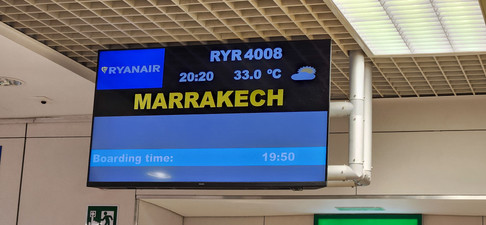






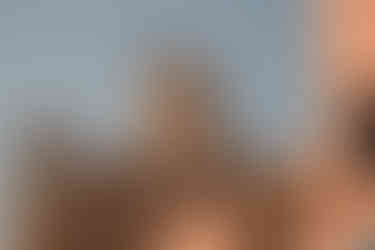




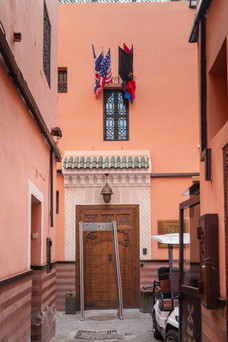























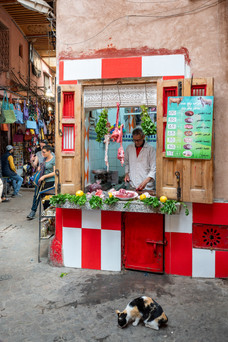













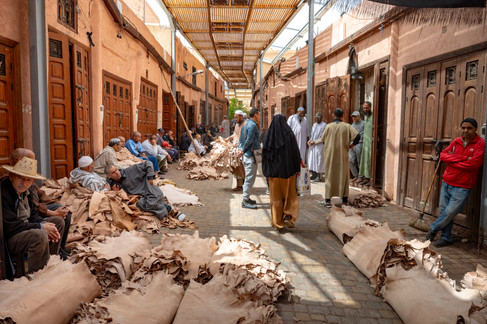






















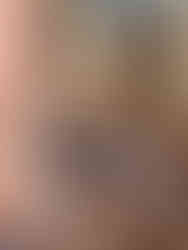













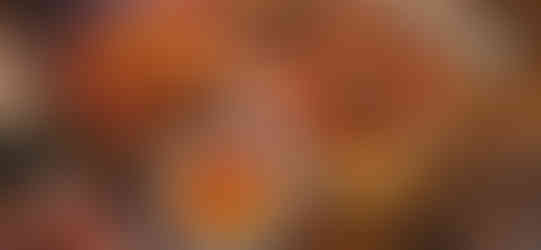








































































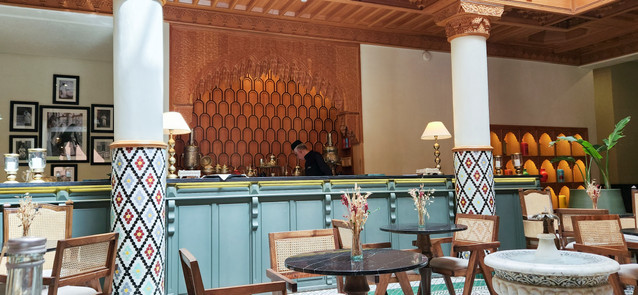




















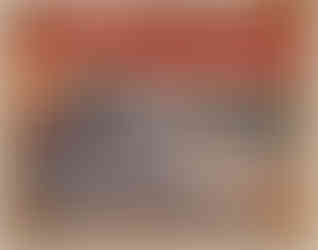

















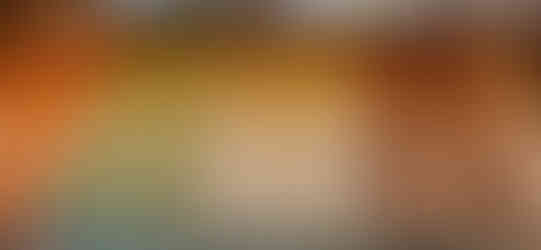

















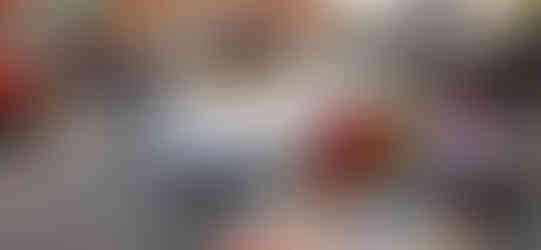







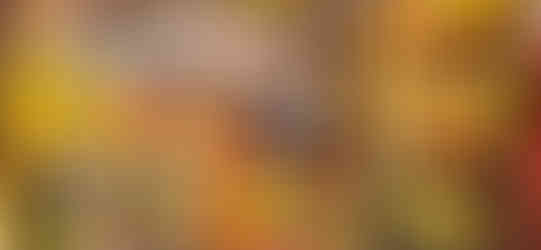


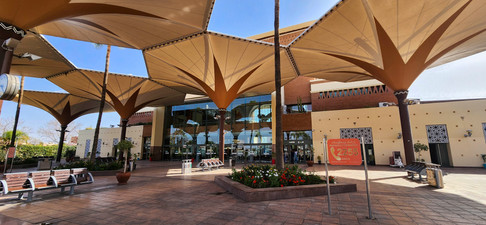





























































































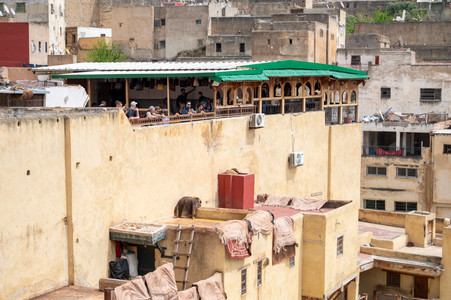

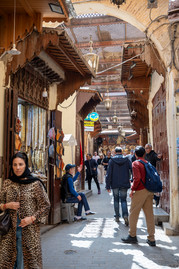









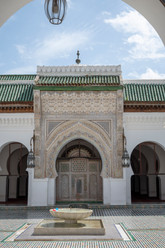





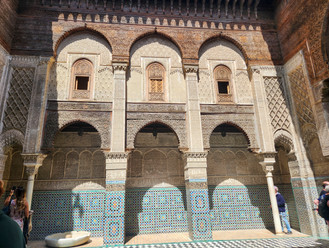





















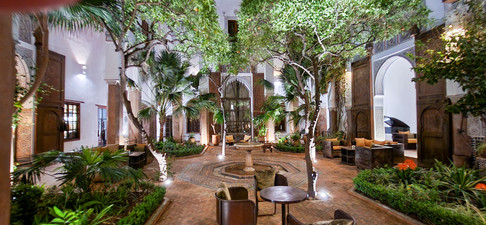












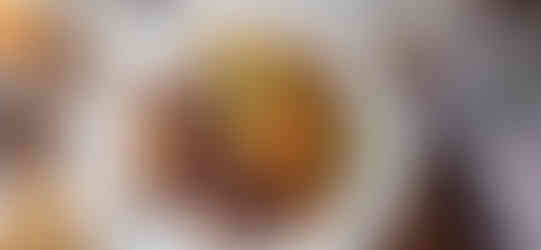


































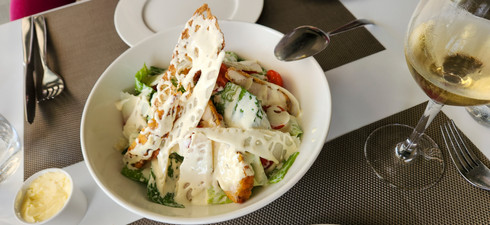



















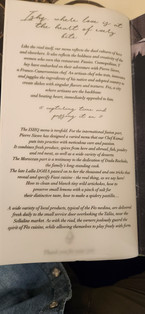









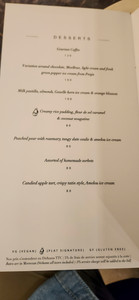




















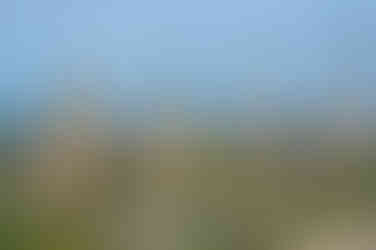






















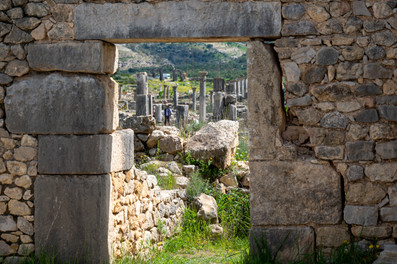






















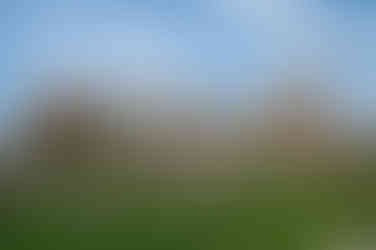



















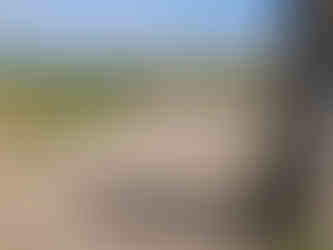

















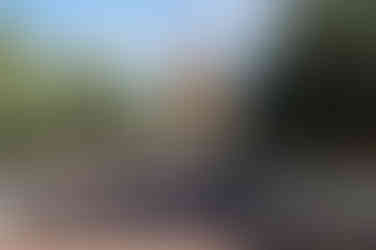


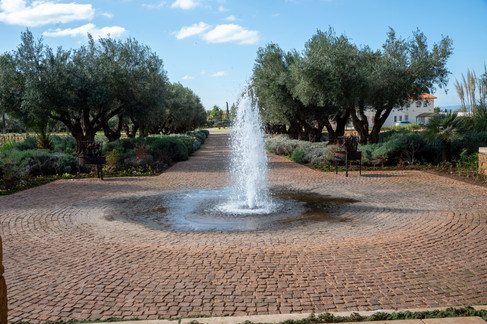






































Comments